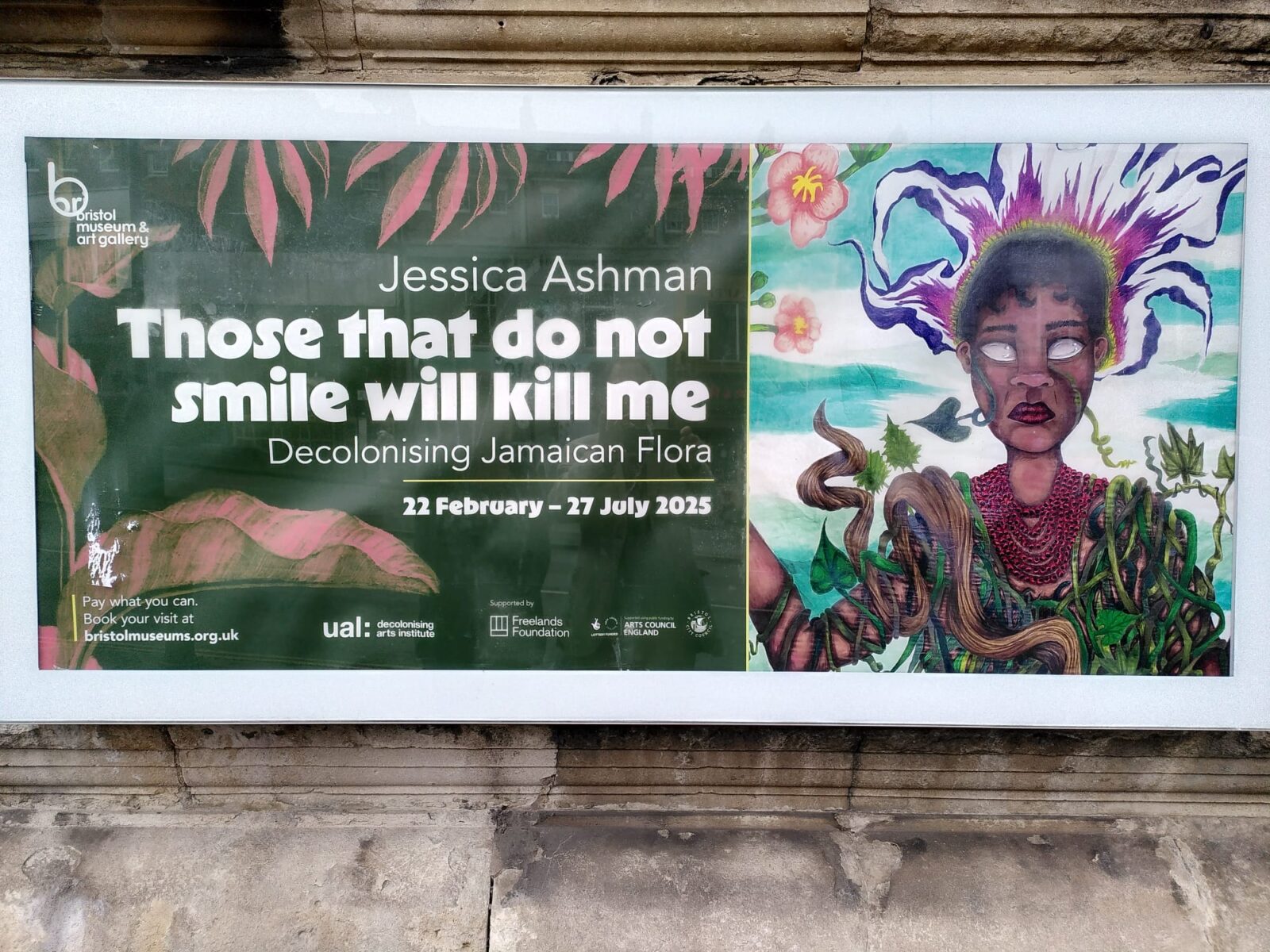A few weeks ago Lord and lady Muck paid a visit to an exhibition about plants in the Bristol Museum and Art Gallery. Called ‘’Those who do not smile will kill me: decolonising Jamaican flora’’. The title comes from the proverb about the Jamaican fruit Ackee. When the fruit does not split or ‘smile’ it is poisonous. The artist Jessica Ashman put the exhibition together from the manuscript of John Lindsay’s (1729-1788) The elegancies of Jamaica and the plant collection of Arthur Broughton (1758-1796) now housed in the Natural History Museum. At that time – the 1780s and 90s, Jamaica was described (by a plantation and slave owner) as a ’land of milk and honey’. Ashman exhibition is her exploration of the experiences of those who were indigenous and enslaved in this island ‘paradise’.
It is a big subject, slavery was a really important engine of wealth creation for the British Empire, not least for the merchants of Bristol. But this is part of the problem with the exhibition. It has been squeezed into a relatively small space in the museum. The result is that it promises more than it delivers. Ashman’s insight is to foreground the minute illustrations of African figures in Lindsay’s illustrations of his book, so creating an alternative narrative that explores how indigenous and African-Jamaicans used plants to resist their enslavement. It is certainly enlightening to discover what enslaved Africans and indigenous Jamaicans would have used as a form of resistance and connection to spirituality. So, Bellyache Bush was used as an abortifacient. The leaves and uncooked tubers of the Cassava were used to assist for both birth control and poison, while the Antidote Caccoon was considered an antidote to poison. Plants with a spiritual dimension included Spiritweed – said to protect from malevolent ‘duppies’ or ghosts. The magic of horticulture is a key element of the work – plants as resistance, growing as rebellion. All this is stated and explained in the exhibitions accompanying explanatory texts, but in terms of source materials or responses to them there isn’t the room (or perhaps the funding?) to provide something that really seizes the imagination. Glimpses yes, a case made for sure, but a sense that there is so much more to explore that we don’t get to see.
